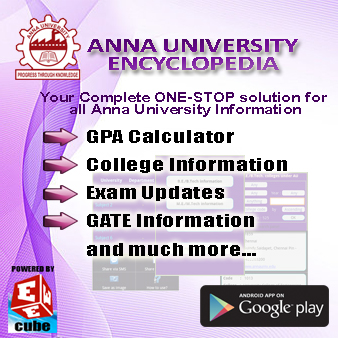SUBJECT RESOURCES:
CLICK HERE to access 'Previous year Question Papers'
CLICK HERE to access 'Question Banks'
CLICK HERE to access '2 Marks with answers'
CLICK HERE to access 'Notes'
CLICK HERE to search more about this subject
SYLLABUS:
CLICK HERE to access 'Previous year Question Papers'
CLICK HERE to access 'Question Banks'
CLICK HERE to access '2 Marks with answers'
CLICK HERE to access 'Notes'
CLICK HERE to search more about this subject
SYLLABUS:
EC2312 DIGITAL SIGNAL PROCESSING L T P C
3 1 0 4
To
introduce the concept of analyzing discrete time signals & systems in the time and frequency
domain.
OBJECTIVES
· To
classify signals and systems & their mathematical representation.
· To analyse the discrete time systems.
· To study various transformation techniques & their computation.
· To study about filters and their
design for digital implementation.
· To study about a programmable digital
signal
processor & quantization effects.
UNIT I INTRODUCTION 9
Classification of systems: Continuous, discrete, linear, causal, stable, dynamic, recursive, time variance; classification of signals: continuous
and discrete, energy and power; mathematical representation of signals; spectral density; sampling techniques,
quantization, quantization error,
Nyquist rate, aliasing effect. Digital signal representation.
UNIT II DISCRETE TIME SYSTEM ANALYSIS 9
Z-transform and its properties, inverse z-transforms; difference equation – Solution by z-transform,
application to discrete systems - Stability analysis, frequency response – Convolution – Fourier transform
of
discrete sequence – Discrete Fourier series.
UNIT III DISCRETE FOURIER TRANSFORM & COMPUTATION 9
DFT properties, magnitude and phase representation - Computation of DFT using FFT algorithm – DIT & DIF -
FFT using radix 2 – Butterfly structure.
UNIT IV DESIGN OF DIGITAL FILTERS 9
FIR & IIR filter realization – Parallel & cascade forms. FIR design: Windowing Techniques – Need and choice of windows – Linear phase characteristics. IIR design: Analog filter
design - Butterworth
and Chebyshev approximations; digital
design using impulse invariant and bilinear transformation -
Warping, prewarping -
Frequency transformation.
UNIT V DIGITAL SIGNAL PROCESSORS 9
Introduction – Architecture – Features – Addressing Formats – Functional modes -
Introduction to
Commercial Processors
L = 45 T = 15 TOTAL = 60 PERIODS
TEXT BOOKS
1. J.G. Proakis and D.G. Manolakis, ‘Digital Signal Processing Principles, Algorithms
and Applications’, Pearson Education, New Delhi, 2003 / PHI.
2. S.K. Mitra, ‘Digital Signal Processing – A Computer Based Approach’, Tata McGraw
Hill, New Delhi, 2001.
|
|










No comments:
Post a Comment
Note: Only a member of this blog may post a comment.